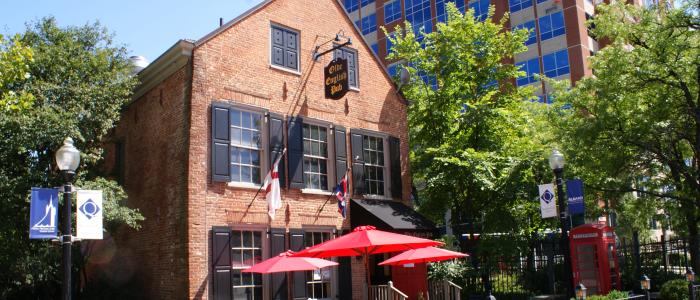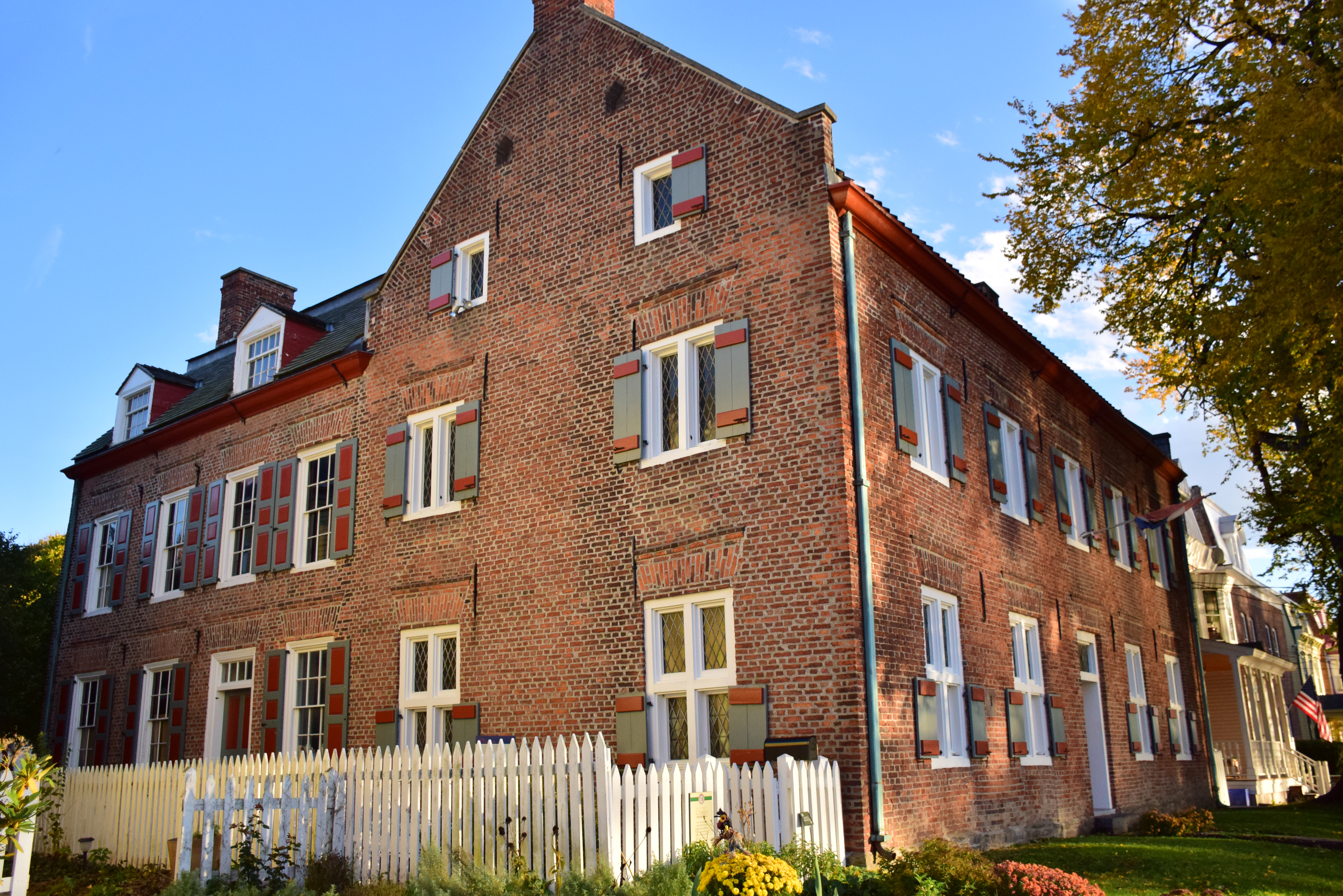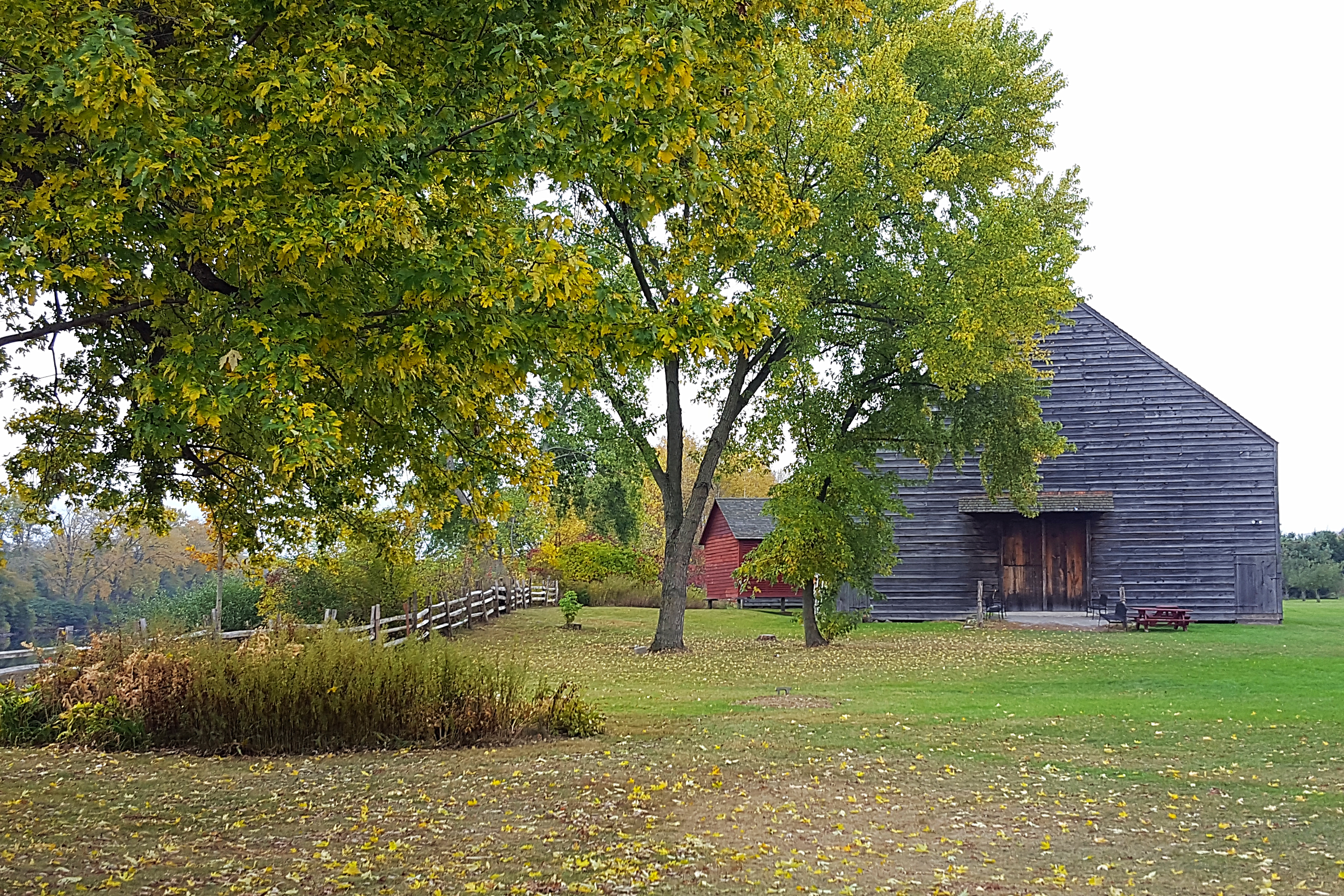
The city of Albany, along with the Hudson River Valley, boasts distinctly Dutch roots. Dutch influence is displayed through historic architecture sprinkled throughout the area. Dive into the history of a few distinctly Dutch buildings in the Capital Region.

48 Hudson
48 Hudson, the Van Ostrande-Radliff House, is the oldest surviving building in Albany. The home was built in the "urban Dutch style" in 1728. This construction style utilizes a series of "H-bents," or wood framing structures that look like the letter “H". The historic building also boasts two Dutch jambless fireplaces. One is located on the north side of the structure. The framing for it is the last known remaining side jambless fireplace in the United States!
Historic Albany Foundation is working to stabilize, preserve, and restore this important piece of America's Dutch history. As an effort to raise money and awareness, there is a large theater scrim draped over the building depicting what the building may have looked like in the 1700s. The rendering is based on research from the New Netherland Research Center and was designed by artist Lee Dixon. Once the building is restored, it will become the new site for Historic Albany Foundation's headquarters. The building will offer a classroom space and host Historic Albany Foundation's public research library.

Old English Pub
Downtown Albany's popular Olde English Pub is housed in a structure referred to as the "Quackenbush House." Built in the 1730s, the Quackenbush House is the second oldest building in Albany. The city's storied Dutch past is illustrated through the double-pitched gable roof and layout of the house. The historic structure is one of the best remaining examples of Dutch urban architecture.

Crailo State Historic Site
Crailo State Historic Site, the only remaining fortified home on the Hudson River, tells the story of Colonial Dutch life in the Hudson Valley. Although the structure has received several makeovers throughout the years, Crailo was built as a Dutch-style house in the early 18th century by Hendrick Van Rensselaer, grandson of Kiliaen Van Rensselaer, the First Patroon. The cellar kitchen features a giant Dutch-style open hearth fireplace that is still used today to create old-fashioned recipes. The historic site is now a museum of the Colonial Dutch in the Hudson River Valley.

Van Schaick Mansion
Nestled on Van Schaick Island in Cohoes, the Van Schaick Mansion was built in the mid-1700s. According to the National Register of Historic Places, the mansion is architecturally significant as it is one of the earliest examples of a building with a gambrel roof (also known as a "Dutch roof") in the upper Hudson Valley. The historic house was built on a Dutch Colonial-style floor plan with a large center hall and still features the original doors, windows, trim and hand-wrought hardware.

Mabee Farm Historic Site
Venture to Mabee Farm Historic Site to step back in time to a centuries-old Dutch farmstead. Tucked beside the scenic Mohawk River, the complex features a hand-pegged 1760 Dutch Barn (originally built in Johnstown, NY) and a 17th Century Dutch House. The Schenectady County Historical Society has transformed the farm into an interactive museum and special events venue.

Photo by Rebecca Gatto
Buhrmaster Barn at the Pruyn House
Among the historic buildings on the site of the Pruyn House, the country estate of Casparus Francis Pruyn, is the Buhrmaster Barn. This Dutch barn was originally located on the Martin Cregier farm along the Mohawk River. The Cregiers were a prominent Dutch family in the area. Although the barn was rebuilt after a fire in the 1800s, the structure still maintains a few of the original features such as hand-hewn beams and wooden pegs.






